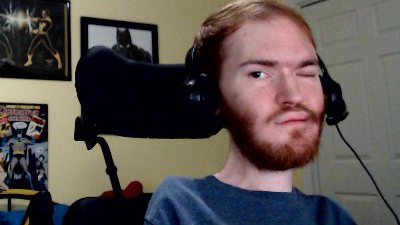Gaming possesses a power of connectivity and inclusion but those with disabilities can still feel they’re being left out.
While gaming companies have tried to improve accessibility in gaming, many believe there’s work still to be done as accessibility is more than just features in a game that make the game accessible.
“When I first started, I used to think that features were the primary force behind accessibility,” said Grant Stoner, a writer with CanIPlayThat?.com, a website that monitors gaming accessibility. “However, after interviewing numerous developers over the course of my years as a journalist, I realized inclusive design is just as important as features.
“It’s very possible to develop a game that can be entertaining and challenging while still remaining accessible without the need for numerous features,” he said.
He cited Pokémon games which allow those with physical disabilities essentially needing only one finger to move the joystick and be able to press any of the face buttons.
Stoner said because Pokémon is turn-based, players can take their time between moves.
The freelance journalist and passionate gamer with Spinal Muscular Atrophy, has been using his stories to amplify the voices of the disabled in the gaming industry.
“Because my disability is progressive, I never really needed any form of accessible software or tech to play games until I was roughly 14 years old,” Stoner said.
“At that point, I was unable to reach the triggers on the Xbox 360 controller, so my brother taped a popsicle stick to the left side, allowing it to lie over the right trigger,” he said. “That lasted for several years until roughly three years ago when I was unable to hold any form of a standard controller.”
At that time, Stoner was primarily a PC gamer because it doesn’t have limitations with a mouse or keyboard. He then began using the Xbox Adaptive Controller with the Logitech Adaptive Gaming Kit to play on an Xbox.
“Currently, I really rely on features like single stick movement, customizable controls, toggling options like crouching, aiming, and sprinting, and occasionally the removal of button mashing and quick timed events,” he said.
“I’m sure that I will need more features, tech, and design services in the future, especially as my disability progresses,” Stoner said.
Gaming companies have begun to improve accessibility features in games but still, often fail to account for key elements that make or break the experience for a player with disabilities.
Josh Miller, a deaf gamer, said accessibility issues are no longer neglected, “but I do think that games don’t always provide the best experience.
“Sometimes key features are missing, design choices are incredibly inaccessible and create too many barriers, and a lack of accessible hardware can prevent many from enjoying a new title,” he said.
Amy Garcia, a gamer with partial blindness, said the disabled experience is “so personal that not accounting for as many experiences as possible will surely leave out a significant portion of disabled players.”

